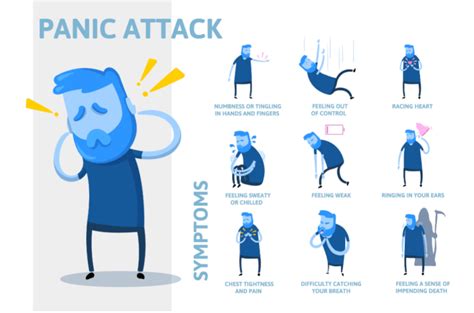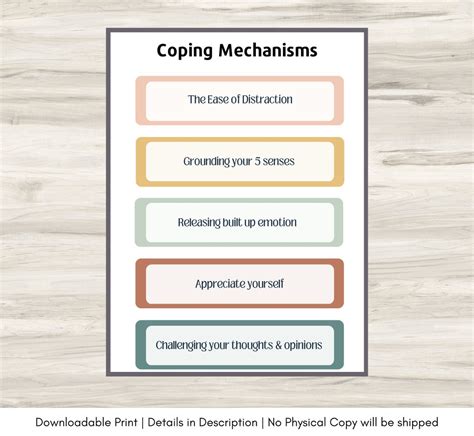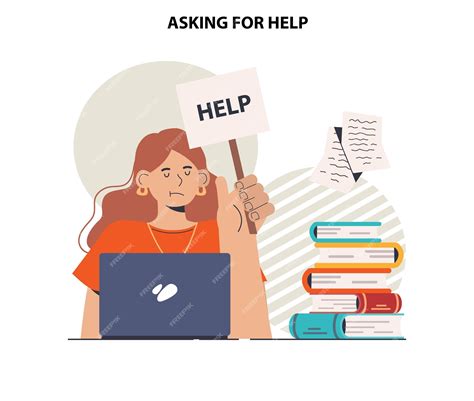Intro
Identify 5 panic attack symptoms, including anxiety, rapid heartbeat, and shortness of breath, to understand panic disorder and its effects on mental health, triggering fear and stress responses.
Panic attacks are intense episodes of fear or discomfort that reach a peak within minutes and can be extremely debilitating for those who experience them. These episodes can occur at any time, even when there is no apparent danger or trigger, leaving individuals feeling helpless and anxious about when the next attack might strike. Understanding the symptoms of panic attacks is crucial for individuals to recognize when they are experiencing one and to seek appropriate help. The impact of panic attacks on daily life can be significant, affecting not only the individual but also their loved ones and overall well-being.
The experience of a panic attack can be overwhelming, with a cascade of physical and emotional symptoms that seem to come out of nowhere. For many, the fear of having a panic attack can itself become a source of anxiety, creating a cycle that's challenging to break. Recognizing the symptoms of panic attacks is the first step towards managing them and regaining control over one's life. By acknowledging the signs and seeking support, individuals can learn to cope with panic attacks more effectively, reducing their frequency and intensity over time.
Panic attacks are not a sign of weakness but rather a signal that something needs attention. They can be treated with therapy, lifestyle changes, and, in some cases, medication. The journey to recovery involves understanding the nature of panic attacks, their symptoms, and the strategies available for managing them. With the right approach and support, individuals can learn to navigate panic attacks and improve their quality of life significantly.
Panic Attack Symptoms Overview

Panic attack symptoms can vary from person to person but generally include a combination of physical and psychological elements. These symptoms can be so severe that they lead individuals to believe they are having a heart attack, are going crazy, or are on the verge of death. Common symptoms include a rapid heartbeat, sweating, trembling or shaking, feelings of choking, and nausea or abdominal discomfort. Psychological symptoms can include feelings of impending doom or death, fear of losing control, and a fear of dying.
Physical Symptoms of Panic Attacks

The physical symptoms of panic attacks can be particularly alarming, as they often mimic those of serious medical conditions. These can include:
- Rapid heartbeat or palpitations: The heart beats very fast, which can feel like it's pounding or racing.
- Sweating: Individuals may experience excessive sweating, even in cool environments.
- Trembling or shaking: The body may shake or tremble uncontrollably.
- Shortness of breath or a feeling of choking: It may feel like it's hard to breathe, or there's a lump in the throat.
- Nausea or abdominal discomfort: Stomach upset can range from mild discomfort to severe nausea.
- Feeling faint or dizzy: Lightheadedness can be so severe that individuals fear they might pass out.
Psychological Symptoms
The psychological symptoms of panic attacks are equally distressing and can include: - Fear of losing control or going crazy: Individuals might feel like they're about to lose control over their actions or thoughts. - Fear of dying: The intensity of the symptoms can lead to a belief that one is about to die. - Feeling of impending doom: A sense of something terrible happening, even when there's no apparent reason for it.Coping Mechanisms and Treatment

Coping with panic attacks involves a combination of understanding the symptoms, seeking professional help, and learning personal coping strategies. Cognitive-behavioral therapy (CBT) is a highly effective treatment, helping individuals understand their panic attacks and learn how to change their thought patterns and reactions to them. Additionally, relaxation techniques such as deep breathing, progressive muscle relaxation, and mindfulness can provide immediate relief during an attack.
Self-Help Strategies
Some self-help strategies can be very effective in managing panic attacks: - Keeping a diary to track when panic attacks happen and what might have triggered them. - Practicing relaxation techniques regularly to reduce overall stress levels. - Engaging in regular physical activity, which can help reduce anxiety. - Avoiding caffeine and nicotine, which can trigger panic attacks in some individuals.Seeking Support

Seeking support is a crucial step in managing panic attacks. This can involve talking to a healthcare provider, a therapist, or a support group. Sharing experiences with others who understand what it's like to live with panic attacks can be incredibly comforting and helpful. Support from family and friends is also vital, as having a strong support network can make a significant difference in recovery.
The Role of Family and Friends
Family and friends can play a supportive role by: - Learning about panic attacks to understand what their loved one is going through. - Being present and supportive during an attack, without judgment. - Encouraging the individual to seek professional help and supporting them in their treatment plan.Conclusion and Next Steps

In conclusion, while panic attacks can be debilitating, they are not a life sentence. With the right combination of professional treatment, self-help strategies, and support, individuals can learn to manage their panic attacks and significantly improve their quality of life. The journey to recovery begins with acknowledging the symptoms of panic attacks and taking that first step towards seeking help.
A Final Note on Hope and Recovery
Recovery from panic attacks is possible, and there is hope for a life free from the fear of these episodes. It's a journey that requires patience, persistence, and support, but the end result is well worth the effort. By understanding panic attack symptoms, seeking the right help, and practicing self-care, individuals can overcome their fears and live fulfilling lives.What are the most common symptoms of a panic attack?
+The most common symptoms include a rapid heartbeat, sweating, trembling, shortness of breath, and a feeling of impending doom or death.
How can I manage panic attacks on my own?
+Practicing relaxation techniques such as deep breathing, progressive muscle relaxation, and mindfulness can help. Regular physical activity, avoiding triggers like caffeine and nicotine, and keeping a diary to track attacks can also be beneficial.
Is it necessary to seek professional help for panic attacks?
+Yes, seeking professional help is highly recommended. Therapies like cognitive-behavioral therapy (CBT) and, in some cases, medication can be very effective in managing and reducing panic attacks.
We invite you to share your experiences, ask questions, or seek advice in the comments below. Your stories and insights can help others feel less alone and more empowered to seek help. Let's work together to build a supportive community where everyone can find the help and understanding they need to overcome panic attacks and live fulfilling lives.
